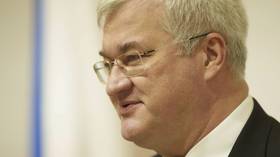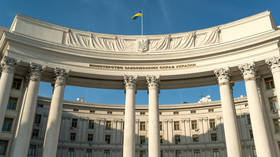US economy entering new ‘supercycle’ – Business Insider

The US economy is currently undergoing a historic shift, moving into a new cycle of higher growth, persistent inflation and geopolitical instability that is expected to reroute cash flow across the globe, Business Insider (BI) reported Sunday, citing economists.
The new “supercycle” will reportedly be marked by higher interest rates and geopolitical and economic volatility that is likely to produce inflationary effects. Moreover, industrial planning is projected to be increasingly impacted by national-security concerns, inevitably altering supply chains across sectors.
The new supercycle “puts the economy in a completely new era,” the CEO of Mar Vista Investments, Silas Myers, told the news outlet, warning that a whole generation of investors, lenders, and entrepreneurs had failed to embrace the “profound impact” that the change will have on their businesses.
The previous “supercycle” emerged in 2008, when the Fed slashed the key rate to 0% in response to the global financial crisis that caused major turmoil around the world, BI said. As a result, yields on Treasury bonds tanked, meaning investors had to start taking some serious risks if they wanted to make money.
The amount of capital flying into emerging markets hit a record high, the outlet stated, adding that in 2010 alone it totaled some $1 trillion. Businesses began loading up on debt, taking advantage of low interest rates. Global non-financial corporate debt reportedly doubled to $66 trillion in the ten years to 2017. Before the Covid-19 pandemic, inflation and wage growth both remained below 3.9%, the outlet noted.
“Supercheap debt” made it easy for businesses to “overexpand and overhire,” Josh Hirt, a senior economist at Vanguard, told BI.
Money managers and corporations currently have to adapt to a changing set of economic realities, Business Insider said, stressing that one of the clearest signs that a new cycle is arriving is when the financial rules stop working the way they used to. Last month, the US Federal Reserve lowered interest rates for the first time in more than four years with a bigger than usual cut. The regulator reduced the target for its key lending rate by 0.5 percentage points, to a range of 4.75%-5%.
From 2022 to 2024, as the benchmark federal funds rate shot up to 5.5% from 0.5%, the Nasdaq 100 and the S&P 500 surged 23% and 22% correspondingly. In the meantime, unemployment has remained below 4.3%, while GDP growth has remained stable, the outlet noted.
According to the analysts cited by BI, the neutral rate that is the optimal point for encouraging growth without triggering inflation will stay higher for the foreseeable future, eventually settling at about 3.5%.
“Even if we do dip below 3.5%, the Fed will be anchored at that higher rate,” Hirt says. “If the economy were to experience weakness and we have to cut rates, we still don’t think that means taking rates back to zero.”













